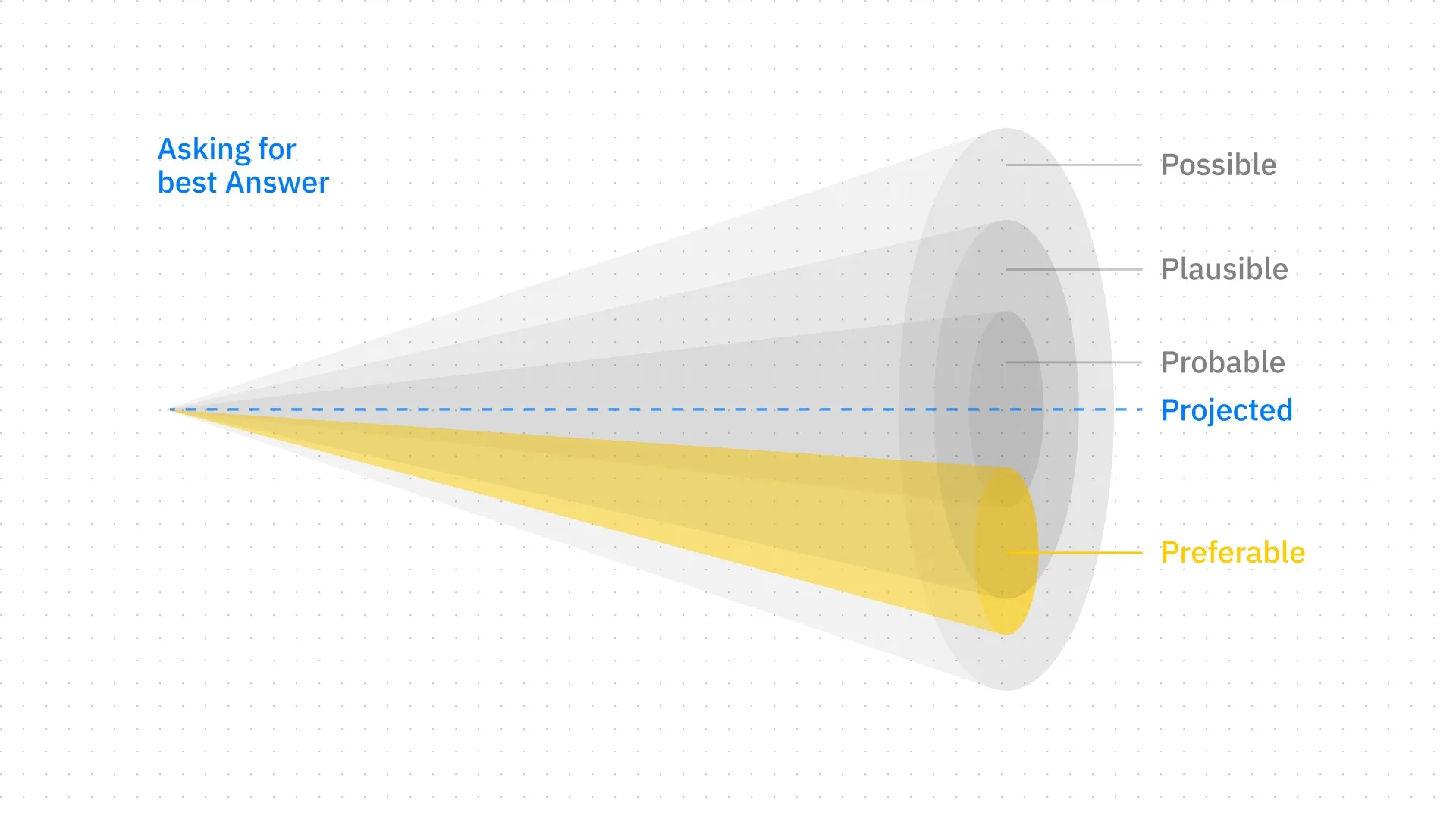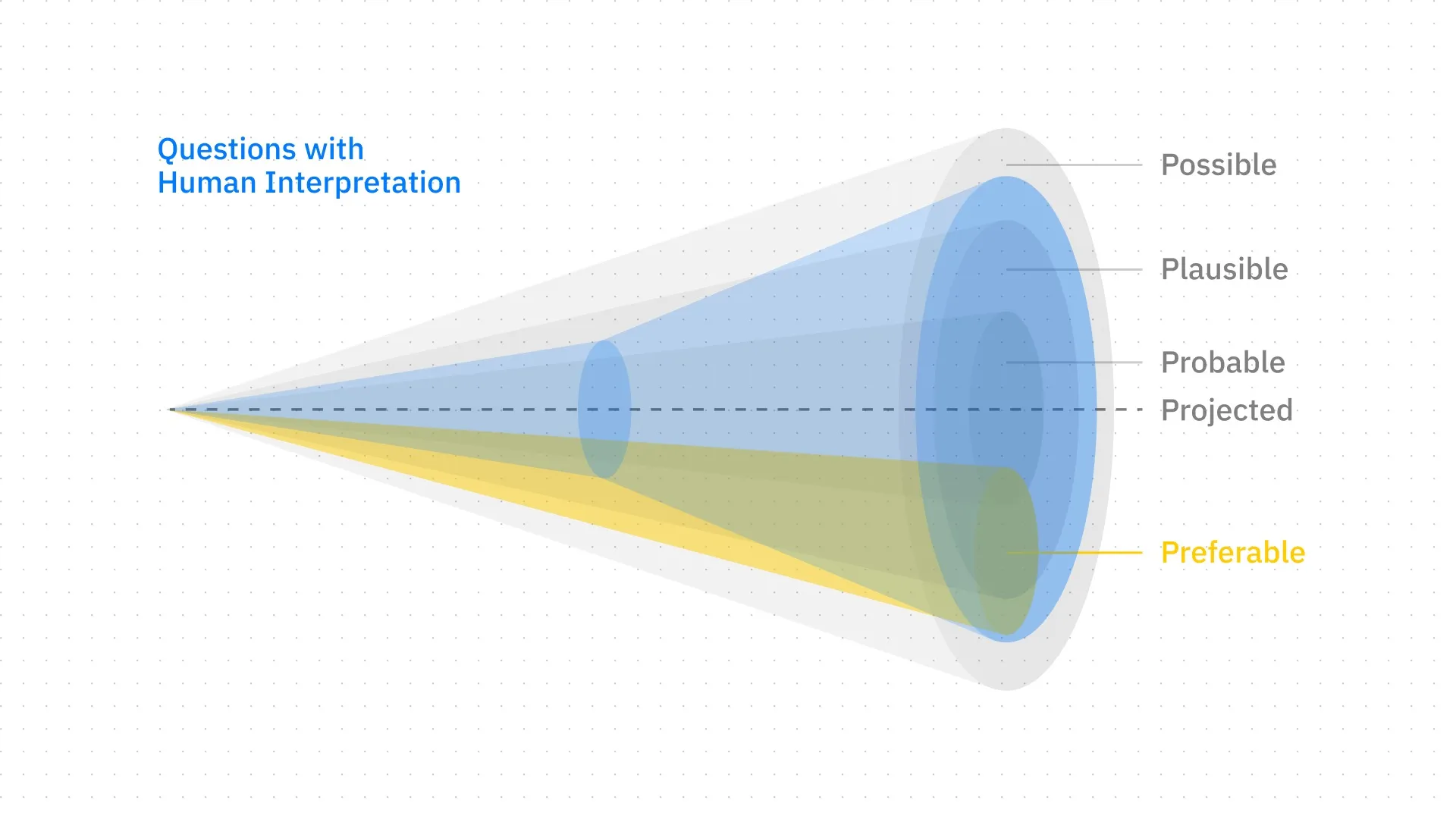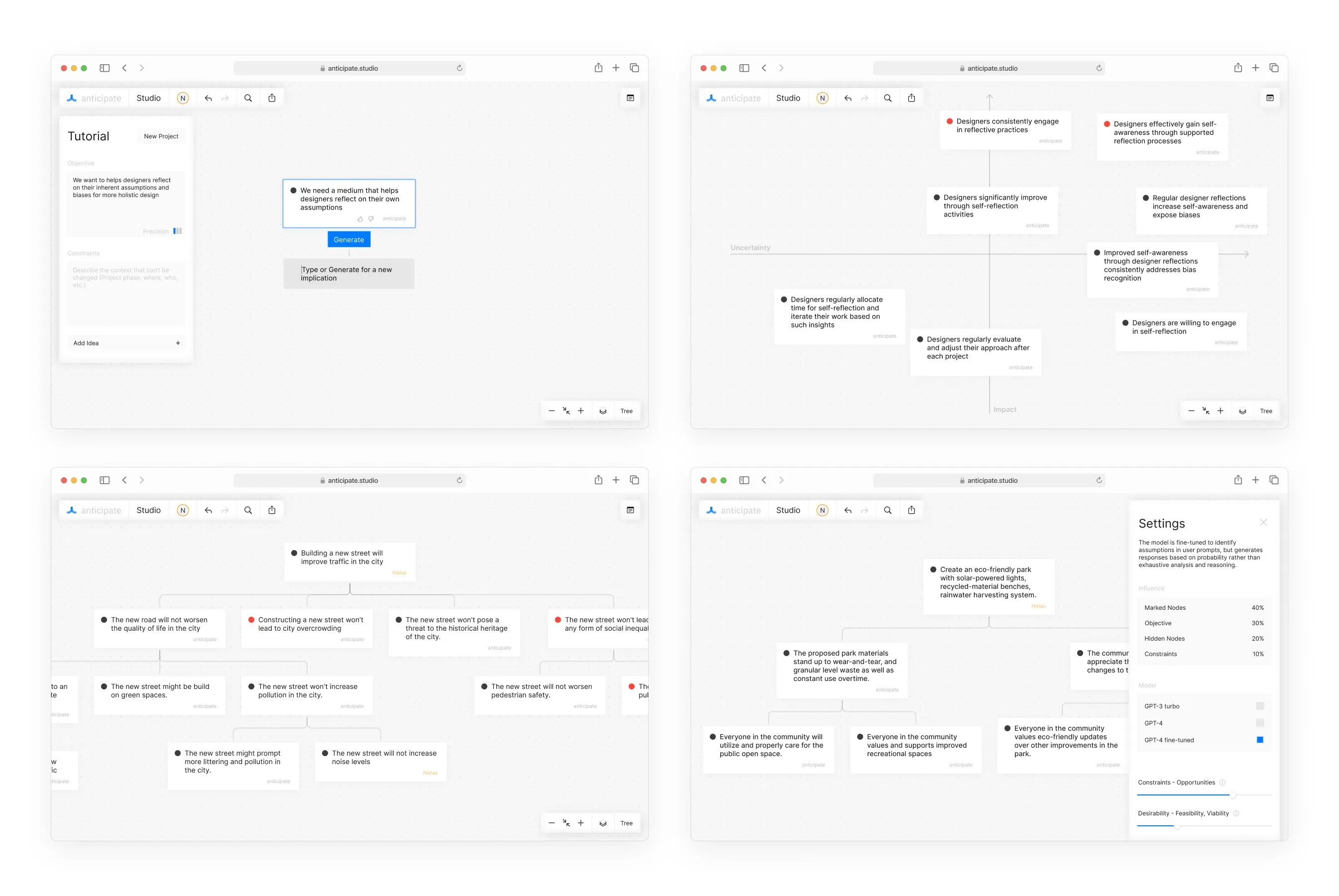Anticipate - Challenging hidden assumptions within the design process

Challenging hidden assumptions within the design process
Bachelor Thesis by Niklas Muhs (in BA Product Design)
The project Anticipate delves into the intersection of design and artificial intelligence (AI). It explores how AI influences design processes, especially during initial ambiguous and complex stages. The project acknowledges the limitations of AI, which often projects current societal thought patterns into the future, potentially reinforcing biases and existing mental models. This can lead to a cycle where AI-based designs further solidify current societal beliefs and structures.

The core idea behind “anticipate” is to utilize AI in a way that enhances the design process without overriding human decision-making. It aims to use AI to uncover hidden assumptions and biases in the design process, thereby encouraging more holistic thinking and innovation. This is achieved by using AI not to generate decisions or ideas, but to provide stimuli for reflection and to challenge existing thought structures. The project seeks to identify ‘unknown unknowns’ in design, helping designers to consider aspects they might not have recognized independently.


A prototype was developed to make the research hypothesis tangible and to explore the potential and applicability of the concept, including the uncovering of unknown unknowns through user tests. The user interface of the prototype allows users to input objectives and constraints, which helps in generating relevant presumptions and organizing the necessary validations. The interface also educates users on the AI model’s operation, aligning expectations with outcomes and enabling users to define the preferability of futures.

The “anticipate” interface includes a collaboration feature, allowing teams to reveal and discuss individual beliefs and assumptions, which could improve stakeholder alignment. Users can highlight critical presumptions to emphasize their significance and convey priorities to the AI model, increasing the likelihood of receiving relevant results. Additionally, the interface allows the creation of additional views for prioritizing presumptions based on personal criteria.
Overall, “anticipate” aims to responsibly use AI in design processes, not to generate decisions or ideas, but to provide stimuli for reflection and challenge existing ways of thinking.
Further development of Anticipate was enabled by generous support by the Institute of Applied Research (IAF).
Publication by Niklas Muhs and Aeneas Stankowski currently under review.
